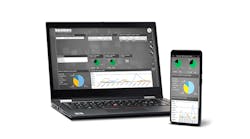This column is moderated by Béla Lipták (http://belaliptakpe.com/), automation and safety consultant, who is also the editor of the Instrument and Automation Engineers' Handbook (IAEH). If you would like to become a contributing author of the 5th edition of the 1st volume, to be published in 2015, or if you have an automation-related question for this column, write to [email protected].
- We begin by clearly defining the purpose of the analyzer. What precisely do we want it to do?
- Next, determine if a continuous on-line analyzer is needed, or if an intermittent, grab-sample-based laboratory analysis is sufficient.
- For on-line units, the next step is to determine if the instrument can be removed for calibration or, if automatic, on-line self-calibration is needed. It's also desirable to resolve if the recalibration should be triggered by self-diagnostics, operator initiation or time.
- The next step is to determine if the system requires in-line or off-line installation.
- If a probe type design is selected, decide if it should be provided with means for self-cleaning.
- If you are using a sampling system, determine what types of accessories you require for filtering, etc.
- Only after an in-depth review of these issues should you decide on the type of analyzer and accessories to be used. To quickly identify the types of analyzers to consider, an orientation table such as the one below is useful.
- Only after these steps should the specifications be prepared and sent out for competitive bidding. For this, one can use the analyzer specification form ISA Document 20A1001.
- Once the bids are analyzed and the vendor selected, you can begin the preparation of the installation drawings, and resolve the communication between the analyzer and its workstation or remote displays and/or controllers.
- The last step comes after installation and check-out, when the maintenance specifications are prepared. It is not uncommon to revise the specifications or the selection during the design phase when/if new information is obtained. This is normal and is a sign of good engineering, while the need to make changes after start-up is not.





